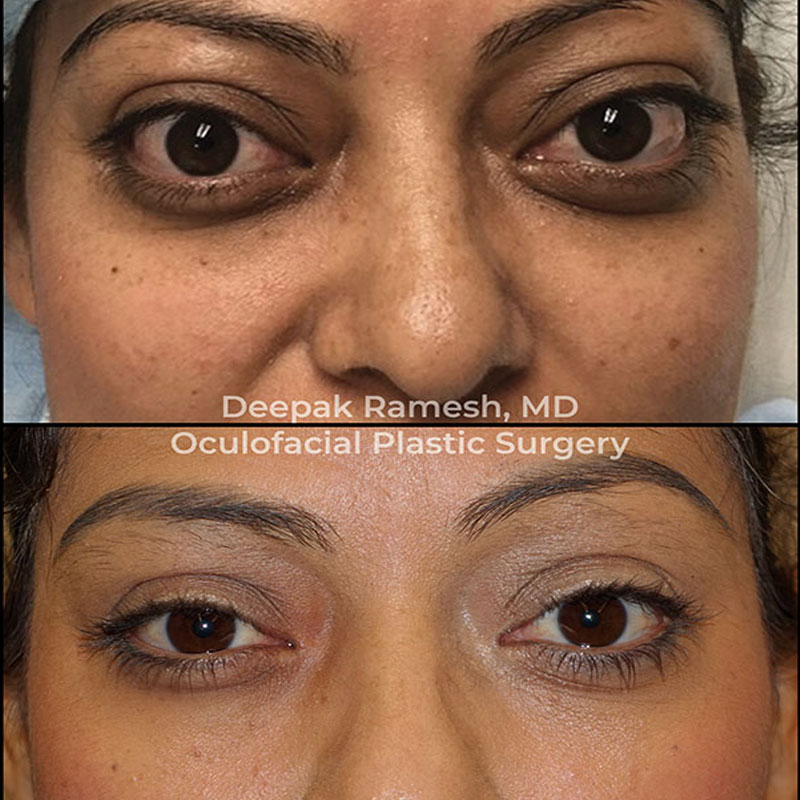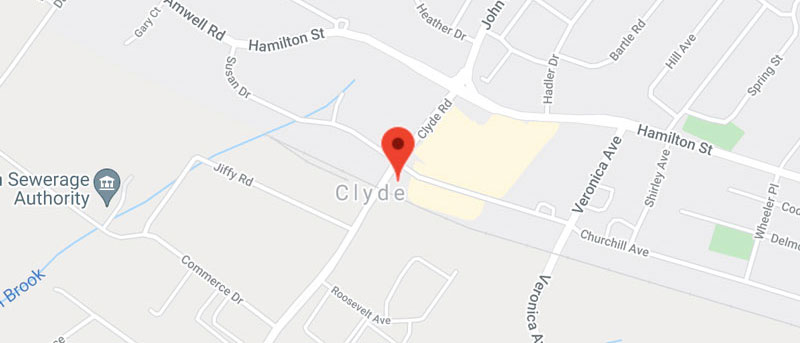The first descriptions of orbital decompression in the early 20th century were by otolaryngologists (ENT) and neurosurgeons, and involved removal of large amounts of bone from the side of the eye socket. Initially, this surgery was only offered to patients with extreme proptosis (bulging of the eyes) and vision loss from the disease. As techniques become more refined, Dr. Ramesh is able to offer this surgery to patients with milder disease or even purely for cosmetic benefit.
How was orbital decompression developed?


What are the different types of orbital decompression?
The first technique to become widely used was developed by Ogura and Walsh, otolaryngologists who published their technique in the 1950s. This involved removing the sinuses underneath the eye socket and allowing the expanded orbital tissues to prolapse into the sinus cavity below. As endoscopic techniques became advanced, more and more sinus tissue was removed to allow space for the eye socket to expand. Patients were often kept in the hospital for several days after this procedure, and the rate of double vision after surgery was over 30%. Moreover, patients were found to develop sinus complications including chronic infections or collections of mucus up to 5-10 years after surgery.
In the 1990s, Goldberg popularized the transorbital decompression, which allowed the surgeon to reduce prominence of the eyes without removing the sinuses. This technique had the added advantage of being performed through the natural eyelid crease, so that no scar was left after surgery. Goldberg and others also published techniques on removal of orbital fat without bony removal for decompression. Many permutations and combinations of these techniques have since been discussed, with surgeons often choosing a technique that they are comfortable with and based on their prior training.
What does Dr. Ramesh recommend?
Dr. Ramesh trained under Drs. Goldberg and Rootman at UCLA, where he became an expert in the transorbital techniques of orbital decompression. He also spent time with otolaryngologists, neurosurgeons, and skull base surgeons to truly familiarize himself with endoscopic sinus surgeons and alternate methods of decompression. Having mastered all these different techniques of orbital decompression, Dr. Ramesh has now refined his technique to allow him to tailor the result specifically to the patient’s anatomy and desires.
In 99% of cases, Dr. Ramesh avoids the sinuses entirely due to the risk of long-term sinus disease 5-10 years after surgery. In fact, trans-sinus decompression techniques have not changed significantly from their original descriptions in the 1950s! The risk of double vision and chronic sinus disease after surgery is still unacceptably high. In addition, Dr. Ramesh proved that removal of the sinuses predisposes patients to having severe facial and eye socket fractures with minimal trauma, as the sinuses serve a valuable purpose as buttresses for the delicate bones of the eye socket.
Rather, Dr. Ramesh chooses a trans-eyelid or scarless approach and focuses on moving the eyeball directly back, rather than to the sides, up, or down. This reduces the risk of double vision after surgery and increases the power of the surgery. Dr. Ramesh often combines this technique with fat removal or sculpting to address areas of fatty enlargement in the brows, cheeks, or eyelids, or additional cosmetic procedures such as eyelid lifting, eyebrow lifting, or facial fat injections. This elegant combination of techniques allows Dr. Ramesh to deliver consistent and aesthetically pleasing results in these complex cases.


Before and after Dr. Ramesh’s orbital decompression technique.
What is recovery like after orbital decompression?
Dr. Ramesh performs orbital decompression as an outpatient procedure without extended recovery periods. With Dr. Ramesh’s procedure, you don’t even have to wear eyepatches after the procedure, so your vision is never compromised.
You may experience some pain and discomfort for a few days, but that can be managed with medications. You’ll experience some swelling and bruising around the eyes for about 2 weeks and will be asked to avoid strenuous workouts for about 2 weeks. You can resume most of your normal activities within a week.
In most cases, orbital decompression is performed with absorbable sutures, so you won’t need a follow-up appointment for the removal of stitches. However, if non-absorbable sutures are used, you’ll have to get them removed during your follow-up appointment after a week.


Why choose Dr. Ramesh?
Dr. Ramesh has a perfect track record with orbital decompression. He’s a nationally recognized, board-certified oculoplastic surgeon and a member of the prestigious American Society of Ophthalmic Plastic and Reconstructive Surgeons (ASOPRS). He has also undergone advanced training for oculofacial, orbital, cosmetic, and reconstructive surgery at the Jules Stein Eye Institute at the University of California, Los Angeles.
For more information on orbital decompression, please schedule an appointment with Dr. Ramesh at Somerset County, NJ.
Contact Us
Schedule an
Appointment
BOOK NOW

The Center for Eye and Facial Plastic Surgery
35 Clyde Road, #104
Somerset, NJ 08873
Monday – Friday: 8:30a – 4:30p
Livingston Office
22 Old Short Hills Rd Suite 202
Livingston, NJ 07039
Monday: 9:00a – 5:00p
Tuesday: 12:00p – 7:00p
Wednesday – Friday: 9:00a – 5:00p
P: (609) 608-0142
F: (855) 644-0469




